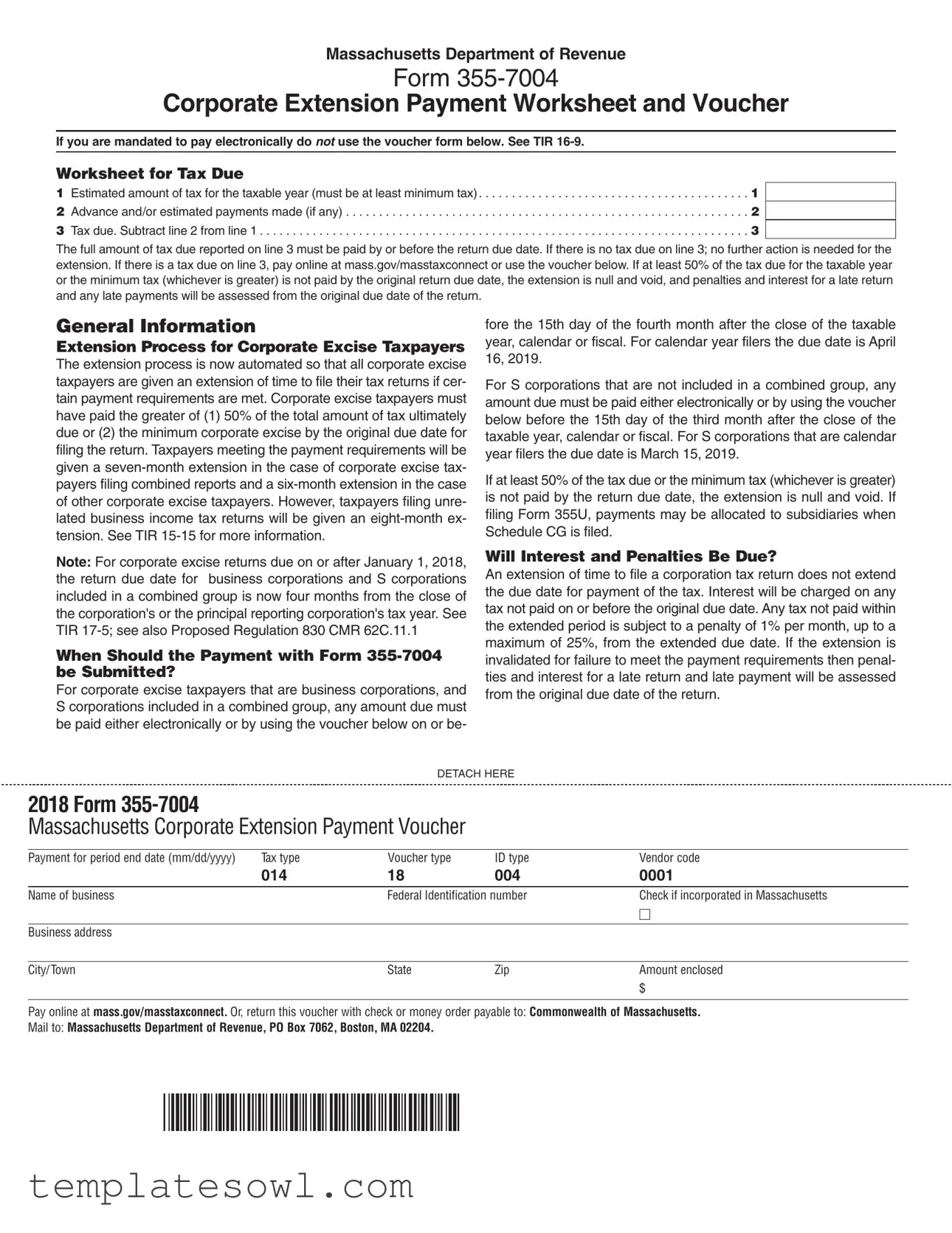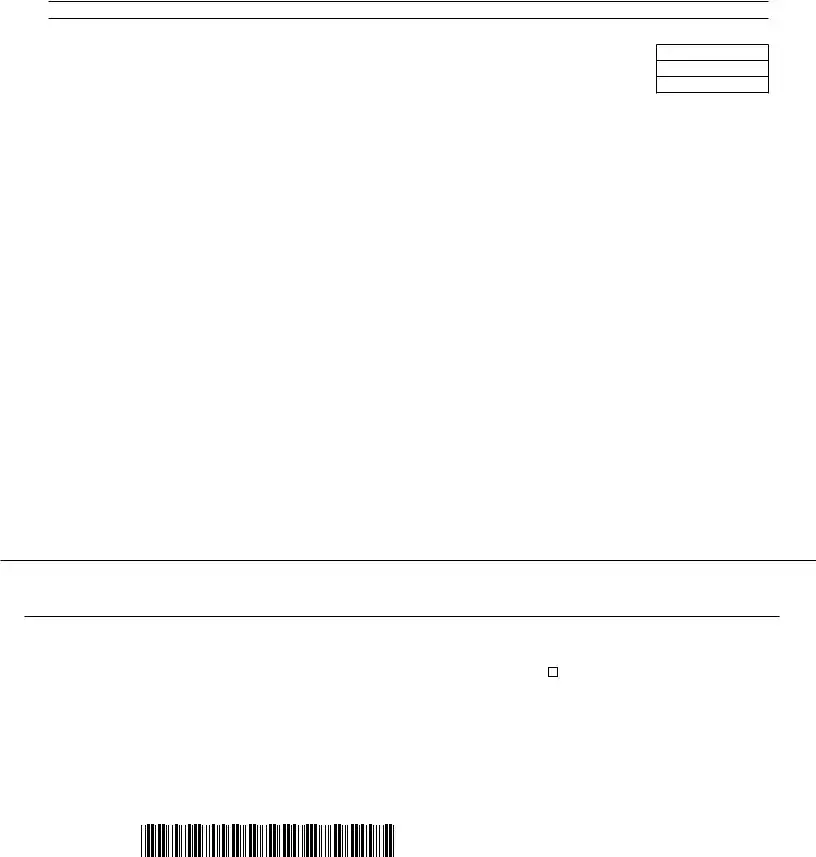What is Form 355-7004?
Form 355-7004 is a worksheet and voucher used by corporate excise taxpayers in Massachusetts. The form is specifically designed for businesses to calculate and submit their estimated corporate excise tax payments. When certain payment requirements are met, this form allows businesses to request an extension for filing their tax returns.
Who needs to file Form 355-7004?
Corporate excise taxpayers, including business corporations and S corporations, are required to file Form 355-7004 when they wish to extend their filing deadline. This applies particularly to those who need to calculate estimated taxes due and pay the required amounts on time to avoid penalties.
When should Form 355-7004 be submitted?
The form must be submitted on or before the 15th day of the fourth month following the end of the taxable year for business corporations and combined group S corporations. For S corporations that are not included in a combined group, the deadline is the 15th day of the third month after the close of the taxable year.
What happens if I don't pay the tax due by the deadline?
If at least 50% of the tax due or the minimum tax is not paid by the original due date, the extension becomes null and void. This means that penalties and interest for failing to file and pay on time will be assessed from the original due date of the return.
Will I incur interest and penalties if I file an extension?
Yes, an extension to file does not extend the due date for tax payment. If any tax remains unpaid after the original due date, interest will be charged. Additionally, any tax not paid within the extended filing period might incur a penalty of 1% per month, up to a maximum of 25% starting from the extended due date.
How do I use the voucher portion of Form 355-7004?
The voucher should be used to submit your payment along with the completed form. It is essential to detach the voucher from the worksheet when sending in your payment. Submission of the entire worksheet may lead to payment delays.
Can I pay my taxes electronically instead of using the voucher?
Yes, taxpayers are encouraged to pay online through MassTaxConnect at mass.gov/masstaxconnect. This option is available for those who prefer a more efficient payment method. Businesses with significant receipts or sales are required to pay electronically.
What if I'm filing Form 355U?
If you are filing Form 355U, you may allocate your payments to subsidiaries, provided you also file Schedule CG. This may help streamline the reporting and payment process for businesses with multiple entities.

